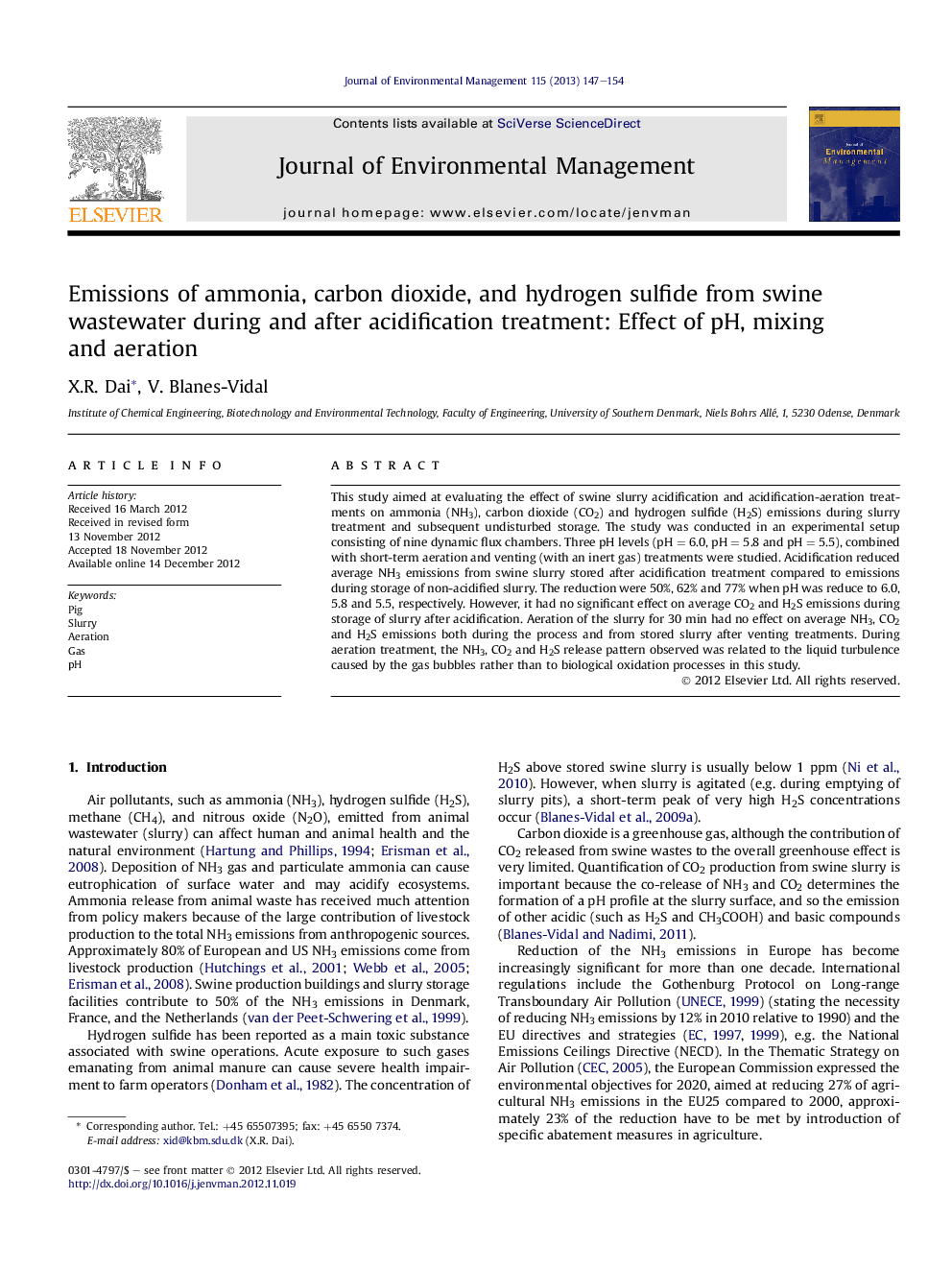| Article ID | Journal | Published Year | Pages | File Type |
|---|---|---|---|---|
| 1056234 | Journal of Environmental Management | 2013 | 8 Pages |
This study aimed at evaluating the effect of swine slurry acidification and acidification-aeration treatments on ammonia (NH3), carbon dioxide (CO2) and hydrogen sulfide (H2S) emissions during slurry treatment and subsequent undisturbed storage. The study was conducted in an experimental setup consisting of nine dynamic flux chambers. Three pH levels (pH = 6.0, pH = 5.8 and pH = 5.5), combined with short-term aeration and venting (with an inert gas) treatments were studied. Acidification reduced average NH3 emissions from swine slurry stored after acidification treatment compared to emissions during storage of non-acidified slurry. The reduction were 50%, 62% and 77% when pH was reduce to 6.0, 5.8 and 5.5, respectively. However, it had no significant effect on average CO2 and H2S emissions during storage of slurry after acidification. Aeration of the slurry for 30 min had no effect on average NH3, CO2 and H2S emissions both during the process and from stored slurry after venting treatments. During aeration treatment, the NH3, CO2 and H2S release pattern observed was related to the liquid turbulence caused by the gas bubbles rather than to biological oxidation processes in this study.
► Gas emissions during slurry acidification and subsequent storage were measured. ► Reducing slurry pH significantly reduces NH3 emissions. ► Reducing slurry pH has no effects on average CO2 and H2S emissions during storage. ► Agitation during treatment significantly increases transient CO2 and H2S emissions. ► Aeration has no effect on average NH3, CO2 and H2S emissions from stored slurry.
